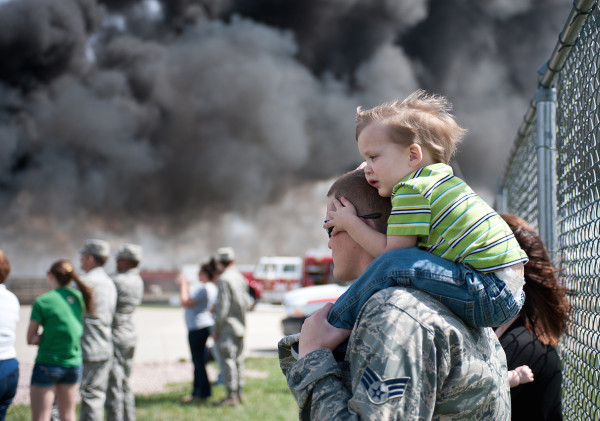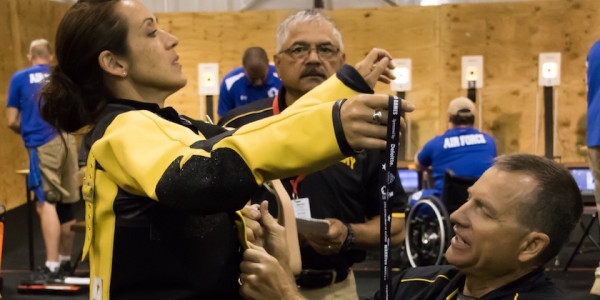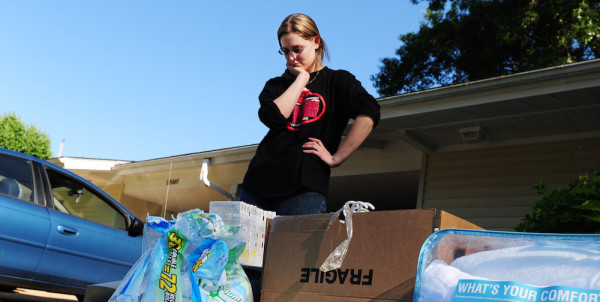Recently there has been an increased recognition of the importance of family resilience, particularly in support of military children, yet there is no Department of Defense-wide definition of family resilience. Military families face a number of unique challenges, from deployments to frequent moves and separations, on top of the regular stresses of civilian life. While many families successfully navigate these challenges, their success doesn’t negate the need for a common approach to supporting family resilience. Without a comprehensive, uniform definition, it is challenging to make measurable progress and provide assistance to those families that may be having a more difficult time.
The Pentagon recognizes this, as well as the fact that in order to have a truly robust family resilience program, there needs to be a common definition as a starting point. The Defense Centers of Excellence for Psychological Health and Traumatic Brain Injury asked RAND Corporation to review studies on family resilience, summarize the literature, and develop a definition that could apply across DoD.
RAND is no stranger to research on military families. The research center has dedicated studies to exploring topics such as the need for military-sponsored child care and the role of military spouses. These are are certainly worthy of their own study, but until a report released in July, the family as a unit had been not analyzed in depth. The focus was instead on individual members and how service and all its associated factors impacted caregivers, spouses, and children. Taking a more holistic approach and looking at how the entire family operates and bounces back from stressors offers valuable insight to the already-existing studies.

Soldiers with the 3/49 Agribusiness Development Team, South Carolina National Guard, embrace family members after the unit’s departure ceremony at McCrady Training Center, S.C., Jan. 10, 2013.Photo by Staff Sgt. Jorge Intriago
RAND researchers began reviewing literature on family resilience in early 2015, at which point they encountered 26 DoD policies related to family resilience. They also focused on how family resilience is commonly defined and what policies to promote family resilience currently exist. As expected, there was no common answer to either question. The report, released July 10 to the RAND website, includes a thorough analysis of existing family resilience content.
Researchers found that definitions of family resilience vary across the services, and there is no officially recognized DoD-wide definition. That there is no standardization in approach or definition makes it incredibly difficult to address this issue. It becomes nearly impossible to accurately measure progress, let alone establish concrete goals, without a common starting point.
On the more positive side, the researchers identified several common family resilience factors — resources that families use to cope with stress — in their research on family resilience models. They were grouped into helpful domains, including family belief system, family organizational patterns, family support system, family communication/problem-sharing, and physical and psychological health of individual family members.
These factors were noted to have helped civilian families cope with issues such as financial distress, divorce, chronic physical and psychiatric illness, drug addiction or abuse, and exposure to trauma and natural disasters. It should come as no surprise that military families face all of these problems and often simultaneously. Although the types (and, possibly, amount) of stress that military families face may differ from those civilians face, the resources needed to combat them do not.
The RAND report presents six recommendations to help guide the development of comprehensive family resilience programming.
- DoD should designate a governing or oversight body to manage the overall family-resilience enterprise, including definitions, metrics, policies, and programs.
- The family-resilience enterprise organization should adopt an official DoD definition and model of family resilience.
- The family-resilience enterprise organization should have a “road map” that follows established programs, policies, and definitions, ensuring that all stakeholders know their role and how they contribute to the success of the overall family-resilience enterprise.
- The family-resilience enterprise organization should encourage a culture of continuous quality improvement across DoD and within family-resilience programs.
- DoD should develop a system of coordination between programs to avoid redundancy and to encourage continuous quality improvement .
- The broader research community should identify what aspects of family resilience matter most for best practices in military family-resilience programs.
The recommendation pertaining to a culture of continuous quality improvement is especially encouraging. This recommendation recognizes that the establishment of a family-resilience enterprise will be an ongoing process that will need tweaks and adjustments in order to achieve the best results for service members and their families.

Senior Master Sgt. Mary-Dale Amison paints pottery with Lillian Johnson, 20th Reconnaissance Squadron sensor operator, during a Hearts Apart event at the Chartreuse Moose in Warrensburg, Mo., June 17, 2013.Photo by Staff Sgt. Nicholas Wilson
From a leadership perspective, what is especially useful from RAND’s research on family resilience is the implication for retention. That military families face high stress in not the issue, but without a clear understanding and resulting support, we cannot expect to retain our service members. Facing back-to-back deployments and constant moves is one thing, but to do so without resources or support leaves little incentive for our service members to reenlist.
It’s not clear what Pentagon leadership will do with the findings and recommendations from the RAND report. However, the fact that the department is dedicating resources to investigating this issue is meaningful. Reinvigorating the conversation is helpful in getting people to consider the important issue of supporting not just our service members, but the families who support them every day.
Beyond the recommendations, it’s also important to emphasize that words truly matter. The RAND report notes that by first defining the concept of family resilience, DoD can better develop programs to support it and help military families best adapt to the challenges of military life. Basically, you can’t follow through and fully build and support something without having a clear definition of what that thing is.
To that end, RAND proposed the following definition of family resilience: “the ability of a family to respond positively to an adverse situation and emerge from the situation feeling strengthened, more resourceful, and more confident than its prior state.” Simple and clear. I can’t think of any better marching orders for this type of programming.








